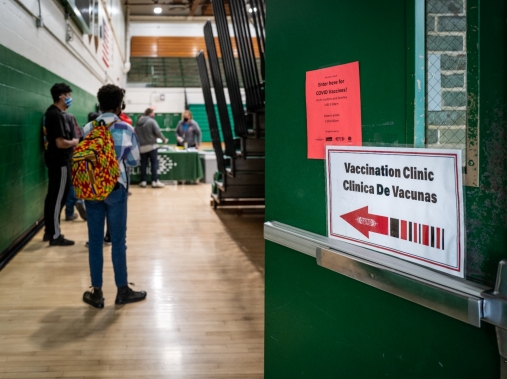|
|
RAND research and commentary on the issues that matter most
|
Jan 27, 2022
|
|
|
|
|
Photo by Erik De Castro/Reuters
|
|
|
|
The Department of Defense has committed to an array of policies and processes that aim to mitigate and respond to civilian casualties resulting from U.S. military operations. But a RAND report released today finds that weaknesses and inconsistencies remain. Additionally, lessons from military strikes that caused civilian casualties are not shared across the department in a way that meaningfully reduces future casualties.
The authors recommend several ideas for reform, including
- making civilian casualty assessments more robust by expanding the kinds of data and information used and improving DoD's management of civilian casualty-related data
- adapting investigations of civilian harm incidents to support operational and institutional learning within the military
- providing guidance and training on all options available to commanders when responding to civilian harm and assisting those affected
- creating dedicated, permanent positions for protection of civilians in each geographic combatant command and across DoD
- creating a center of excellence for civilian protection.
Such improvements “will enable DoD to address civilian-harm issues with institutional, not just operational changes,” said lead author Michael McNerney. Read more »
|

|
|
Adam Kern, principal of Clarkston Junior High School in Michigan, checks students' temperatures during a field trip, Sterling, Virginia, June 18, 2021. Photo by Evelyn Hockstein/Reuters
|
|
Four out of five secondary principals experienced frequent job-related stress during the 2020–2021 school year, according to a RAND survey. Notably, constant stress was especially likely among people of color, female principals, and those serving high-poverty schools or schools with high enrollment of students of color. As one principal summed it up, “This has been one of the toughest years for educators ever.”
Read more »
|
|

|
|
Photo by Kanawa_Studio/Getty Images
|
|
A new RAND study shows that alcohol consumption during the pandemic declined among American men but remained steady among women. And as the pandemic has persisted, alcohol-related problems have increased among both men and women—by 69 percent and 49 percent, respectively. The authors say that it's important to continue studying multiple indicators of alcohol use to understand the pandemic's full effect on drinking behavior.
Read more »
|
|

|
|
Signs on a door to a school gym point students to wait in line to receive COVID-19 vaccinations. Photo by Phil Roeder/Flickr
|
|
The Equity-First Vaccination Initiative aims to reduce racial and ethnic disparities in COVID-19 vaccination rates in the United States. RAND researchers are in the midst of assessing this program, identifying lessons that could help inform future efforts. Their early findings suggest that when it comes to tailoring strategies to address barriers to vaccine access, there is almost no such thing as “too hyper-local.”
Read more »
|
|

|
|
Photo by SIphotography/Getty Images
|
|
On the world stage, the United States is focused on deterring intensifying threats from the likes of Russia and China. But according to RAND's Raphael Cohen, deep divisions among Americans at home and the public's distrust in government institutions could lead adversaries to doubt U.S. willpower. “This darkening backdrop of internal division translates into an unsteady American hand in world affairs,” he says.
Read more »
|
|

|
|
A sound sculpture called Click::RAND by Paul Dunham on a background of the RAND book, A Million Random Digits. Sculpture photo courtesy of Paul Dunham
|
|
First published in 1955, the RAND classic A Million Random Digits with 100,000 Normal Deviates has long been used as a statistical resource for scientific experiments, encryption, polling, and much more. But could it also be used to make music? New Zealand–based artist Paul Dunham recently transformed the publication into a sound sculpture, wiring together electromagnetic relays that represent each digit. The result: a clattering, chattering sonic machine.
Listen to a sample »
|
|
|
You already get the latest insights from RAND in your inbox. Why not your earbuds?
Policy Currents is available as a weekly podcast. New episodes every Friday.
Subscribe now »
|
|
|
|
|